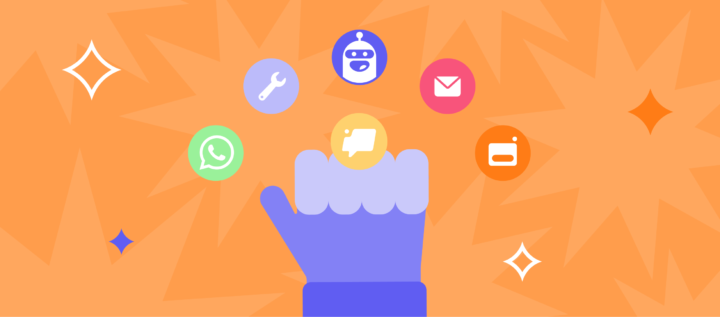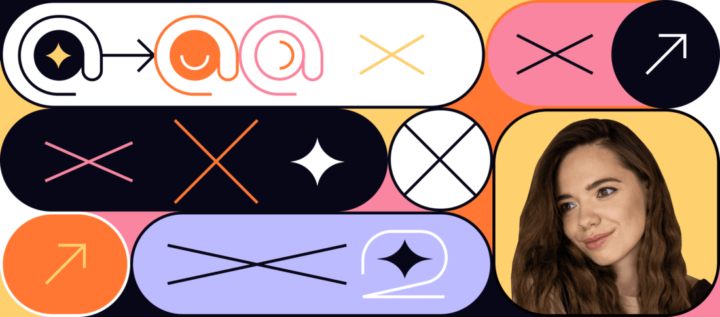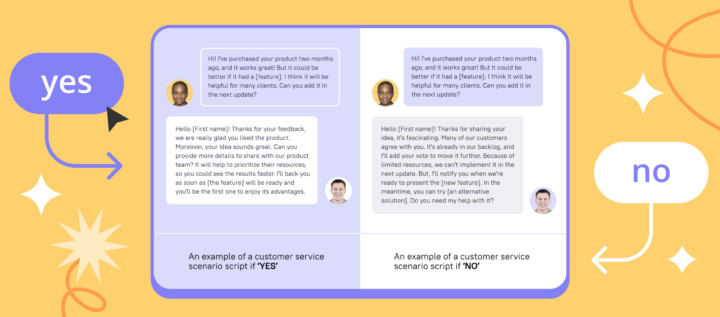10 essential steps for successful client onboarding

Introduction
Client onboarding is more than just a series of procedural steps; it is a critical phase that sets the stage for enduring client relationships and satisfaction. As businesses strive to navigate the complexities of their products and services, an effective onboarding process becomes paramount.
Research reveals that a staggering 75% of users abandon a product if they encounter difficulties within the first week, highlighting the urgent need for companies to prioritize onboarding strategies that foster customer loyalty. With a significant focus on acquisition over retention, organizations risk losing valuable clients without a structured approach to onboarding.
This article delves into the essential components of client onboarding, including:
- Defining objectives
- Gathering client information
- Leveraging technology
- Continuously improving the process through feedback
By understanding and implementing these key strategies, businesses can enhance client experiences and ensure long-term success.
Understanding client onboarding: The key to successful relationships
Client onboarding is more than just a checklist; it’s the lifeline of your relationship with new customers. This stage is where you integrate them into your products or services, and it matters more than you might think. A smooth onboarding experience can set the tone for long-term loyalty and satisfaction. If you do it right, you’re not just guiding them through a product; you’re building a foundation for ongoing engagement.
Consider this: 75% of users will ditch a product if they can’t figure out how to use it in the first week. That’s a staggering number. It highlights the importance of effective training and support. Yet, shockingly, only 18% of companies focus on keeping their customers, while over 44% chase new ones. This is a wake-up call. Businesses need to shift their focus to retention and invest in onboarding to build loyalty.
Now, let’s talk about trust. Outstanding client service is the cornerstone of consumer confidence. You have to establish that trust right from the start. As Serra Alban aptly puts it, “I might end up sharing excessive movie trivia but hey, old habits are tough to break.” This speaks to the power of engaging with customers through relatable and informative content during onboarding. It’s about making that first impression count.
And here’s a telling statistic from the case study ‘Digital Tools and Customer Experience’: 75% of people who started using digital tools during the pandemic plan to stick with them. This shows the critical role of digital integration in keeping customers who have adapted to new technologies.
A structured client onboarding process is the bridge between closing a sale and nurturing a customer. It ensures that new clients feel valued and informed every step of the way. Implementing effective onboarding strategies isn’t just good for immediate satisfaction; it’s vital for cultivating lasting relationships. If you want to succeed, make client onboarding a priority.

10 essential steps for effective client onboarding
Define objectives: You can’t hit a target you can’t see. Setting clear goals for the integration process is crucial. It aligns what your team and the customer expect. When both sides understand the outcomes, you’re not just improving retention; you’re building a solid foundation for a lasting relationship.
Gather customer information: Think of customer information as the blueprint for your integration. You need to know their needs, preferences, and expectations. This tailored approach isn’t just nice to have; it’s essential. Each customer is unique, and addressing their specific needs can make or break their experience.
Create a welcome package: A welcome kit is your first impression. It should include key information about your services, important contacts, and useful resources. This isn’t just about handing over materials; it sets the tone for the relationship. A well-crafted package can significantly smooth out the transition for new customers.
Assign a dedicated integration specialist: One point of contact is crucial. Assigning a dedicated integration specialist gives customers personalized attention. This person guides them through the process, answering questions and providing support. It’s about making them feel valued and understood.
Schedule kick-off meetings: Don’t underestimate the power of a good kickoff meeting. Organizing initial discussions about objectives, timelines, and milestones lays the groundwork for open communication. It’s all about creating a shared understanding of the onboarding journey from day one.
Provide training and resources: Training is not optional. Offering sessions and comprehensive materials helps customers feel confident about using your products or services. Remember, 48% of B2B buyers struggle to find up-to-date product information. As Avionos points out, this is a significant hurdle. Make sure your customers have what they need to succeed.
Set Up communication channels: Clear communication is non-negotiable. Whether it’s email, chat, or phone, establish easy ways for customers to reach out for support. When they know they can get help when needed, it fosters trust and satisfaction.
Monitor progress: Regular check-ins are your best friend. They allow you to evaluate how the integration is going and address any challenges early. This proactive approach shows customers you’re committed to their success.
Request input: Don’t just assume everything is going smoothly. Ask customers for their feedback on their initial experiences. This input is invaluable for spotting areas that need improvement. It also demonstrates your willingness to adapt to their needs.
Evaluate and adapt: The market is always changing, and so should your integration process. Continuously review and refine based on client feedback. With over 60% of U.S. consumers preferring digital tools for straightforward inquiries, your integration must adapt to these preferences. Plus, consider the case study on mobile user initiation—60% of users think desktop apps are less effective than mobile ones for explaining product functionality. A mobile-first strategy focusing on simplicity and speed isn’t just smart; it’s essential for enhancing the user experience.

The role of communication in client onboarding
Communication isn’t just important; it’s the backbone of a successful client onboarding process. You want to build trust and transparency from day one. That’s how you turn a good experience into a great one. Keep your clients in the loop with regular updates and clear instructions. This not only keeps them informed but also eases any worries that might pop up during this critical phase.
Here’s a wake-up call: A recent study found that 67% of companies see follow-ups with both internal and external teams as a major time drain. This points to a glaring need for streamlined communication strategies that improve project visibility right from the start. Different channels — emails, phone calls, video conferencing — give clients options to engage in the way that suits them best. And don’t overlook this: A report from Harvard Business Review revealed that over 90% of employees want weekly updates from their companies. That’s a clear signal for consistent and open dialogue.
To fine-tune your communication strategies, leverage tools like employee surveys and audits of your internal communication channels. Consider this: a case study titled ‘Consequences of Poor App Usability’ showed that 80% of users have ditched an app due to usability issues. This underscores the importance of user education for app retention and highlights how critical a smooth introduction process is to prevent users from walking away. Listening to customer feedback and addressing their questions not only builds a collaborative atmosphere but also makes your clients feel valued and understood.
When you prioritize effective communication, you’re not just improving client onboarding; you’re crafting an engaging and supportive experience that sets the stage for long-term success.

Leveraging technology for streamlined client onboarding
Technology isn’t just a nice-to-have in customer onboarding; it’s essential. Think of it as the oil that keeps the engine running smoothly. When you automate repetitive tasks like data entry and document management, you free up your team to focus on what really matters — strategic initiatives that drive growth. Here’s the kicker: 48% of B2B buyers struggle to find current product or service information. This isn’t just a minor inconvenience; it’s a clear call for robust technology solutions.
Enter Customer Relationship Management (CRM) systems. These are not just fancy software; they’re lifelines for managing customer interactions and workflows. A good CRM centralizes all client onboarding information, making it easier to stay organized and communicate effectively. When you leverage digital communication platforms, you enable real-time collaboration, ensuring your team can provide timely updates and support throughout the onboarding process.
Take the case study ‘Better Client Integration = Higher Retention Rates.’ It shows that an outstanding user experience during onboarding is crucial for keeping customers. Organizations that harness these technologies create a responsive onboarding experience that meets the needs of clients and internal teams alike. This technological integration isn’t a luxury; it’s a necessity. A better user experience during onboarding directly correlates to higher retention rates.
Consider this: studies show that unhappy customers don’t just grumble; they leave negative reviews and start looking for alternatives after a single bad experience. In fact, 33% of US consumers think about switching companies after just one negative interaction. Staying ahead of the curve with technology trends—think AI-driven personalization and analytics—can make all the difference in the integration experience. By prioritizing technology in your onboarding process, you not only boost customer satisfaction but also build loyalty and retention. That’s how you turn a one-time customer into a lifelong advocate.

Continuous improvement: Gathering feedback for better onboarding
Customer feedback isn’t just a nice-to-have; it’s a must-have, especially during and after the onboarding process. Think of it this way: if you’re not listening to your customers, you’re driving blind. Research shows that 31% of consumers believe knowledgeable agents are the key to a great experience. And get this — 73% stick around because of friendly customer service. That’s a clear message: your team’s expertise and approach matter.
To tap into this, businesses need to get serious about collecting feedback. Surveys, interviews, and feedback forms are your best friends here. They provide critical insights into what customers are experiencing. This isn’t just about gathering data; it’s about identifying your strengths and spotting areas that need work. Regularly checking in on this feedback shows customers you value their opinions. It’s like saying, “We hear you, and we care.”
Now, let’s talk about a glaring gap in the market. According to Zendesk, fewer than one-third of businesses offer self-service options like a knowledge base. Yet, 69% of users try to solve their issues on their own first. This disconnect is a golden opportunity. If you can adapt your onboarding strategies to match what clients want, you’re already ahead of the game.
A case study called ‘Caring About What Clients Think’ underscores this point. Businesses that actively seek client feedback and resolve issues quickly build trust and loyalty. This isn’t just good for customer relations; it’s a competitive advantage.
Creating a culture of continuous improvement is essential. It makes your onboarding process more effective and relevant while fostering trust and loyalty. And here’s the kicker: nearly 90% of consumers trust companies rated as ‘very good’ in service to meet their needs. Prioritizing customer feedback and quick resolutions isn’t just smart; it’s necessary for thriving in today’s marketplace.

Conclusion
A robust client onboarding process is crucial for establishing lasting relationships and ensuring client satisfaction. By defining clear objectives, gathering pertinent client information, and providing dedicated support, organizations can create a welcoming environment that fosters trust and engagement. The importance of effective communication cannot be overstated, as it lays the groundwork for transparency and collaboration, enabling clients to feel supported throughout their onboarding journey.
Leveraging technology is another key aspect that enhances the onboarding experience. Automation and CRM systems streamline processes and facilitate real-time communication, ensuring clients receive timely assistance. This technological integration not only improves efficiency but also significantly impacts client retention, as a positive onboarding experience directly correlates with a client’s likelihood to remain loyal.
Finally, the commitment to continuous improvement through client feedback is essential for refining the onboarding process. By actively listening to client insights and adapting strategies accordingly, businesses can enhance their onboarding effectiveness and meet evolving client needs. Ultimately, prioritizing these essential components of client onboarding will not only lead to immediate satisfaction but will also pave the way for long-term client loyalty and success.





![21 proven tools for your 2025 marketing tech stack [Recommended by market experts]](https://www.dashly.io/blog/wp-content/uploads/2022/08/martech-stack-999-720x317.png)


